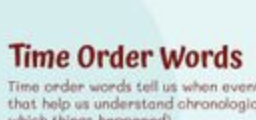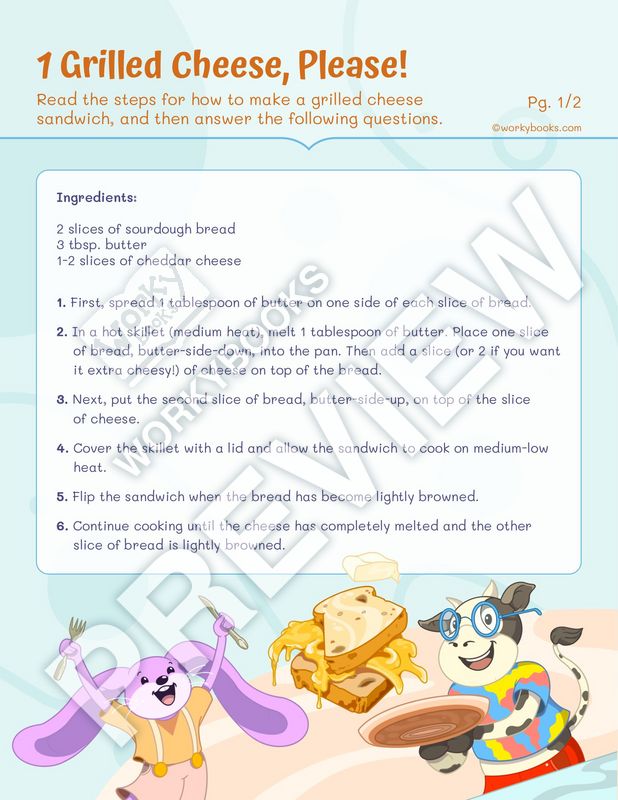Understanding Chronological Text Structure


When reading both fiction and non-fiction pieces, have you noticed how the information seems to follow a sequential order, almost like a storyline unfolding event by event? Well, that’s most likely because the passage follows a chronological text structure.
What is Chronological Text Structure?
Chronological order refers to organizing details and ideas in a text by time – the order of occurrence from start to finish. So whether it is a history article detailing battles of a war or a novel chapter building up to the climax, a chronological flow helps render clarity and cohesion for readers.
How to Identify Chronological Text Structure?
In non-fiction genre articles, chronologically structured passages often provide clear date markers corresponding to key events, discoveries, public policies etc. For example, a textbook section on the Civil War may detail key developments year by year from 1861 up to the Confederate surrender in 1865.
Whereas fictional literary forms like stories and novels do not usually provide explicit dates or years. Instead, the implied sequence is based on relative connections that convey time progression. For instance, a scene where characters pack bags after saying goodbye would indicate the packing occurs after the farewell sequentially.
Reinforcing Concepts of Time Order and Sequence
For example, a magazine article can walk through the key events in a person’s life from when they were a child to becoming an adult. This shows how details are arranged based on when they happened to the person. Similarly, chapters in a fantasy book about a hero’s adventures can move the story forward in a logical order. Recognizing how the events and actions build over time in both real-life stories and fictional tales helps young readers grasp important concepts.
This step-by-step flow gives young students practice tracing and recalling key details that connect over time.
Here are two sample passages to demonstrate chronological text structure –
- One nonfiction
- One fiction:
1. Nonfiction: How Kites Were Invented
Over 3000 years ago, kites were created in China. People made kites from wood, silk fabric, and rice paper. The first kites might have been used to signal warnings or send messages. Later, around 700 BC, Chinese generals began using kites to measure distances. By 200 BC, Chinese farmers started flying kites to scare birds from their crops. Kite flying spread to other Asian countries over time. By the 800s AD, kites became popular in India, Korea, and Malaysia too.
In the passage on how kites were invented, the key events about kites in time order of when they happened are presented. Use of phrases like ‘Over 3000 years ago’ to show kites first started in ancient China. Terms like ‘later’, ‘by’, and ‘over time’ display the order of important milestones .
2. Fiction: Alex and Zac’s Playdate
It was Saturday morning and Alex just woke up to sunshine filling his room. He felt excited because his best friend Zac was coming over later! Alex quickly brushed his teeth and got dressed before running downstairs. “Hi Mom! Can Zac and I have cookies later?” he asked hopefully. His mom reminded Alex to clean his room first before Zac arrives. Alex hurried to put all his toys and books away neatly. *ding dong* – the doorbell rang, signalling Zac’s arrival! The boys rushed off to start their fun weekend playdate together.
In the fictional narrative passage, the events are arranged sequentially as they occurred from Alex waking up. Words Using time-based transitions like later’, ‘before’ and ‘then’ to show logical sequence of events. There is clear chronological track of actions as Alex gets ready, interacts with mom, and ultimately greets his friend
Here are some worksheets on chronological order text structure from Workybooks Digital library
https://www.workybooks.com/worksheet/3.RL.3.3-1/event-sequencing
https://www.workybooks.com/worksheet/3.W.3.3.C-1/time-order-words
https://www.workybooks.com/worksheet/3.W.3.3.C-3/crazy-cody
https://www.workybooks.com/worksheet/3.RI.3.3-2/informational-text-how-to-repot-a-plant
https://www.workybooks.com/worksheet/3.RI.3.8-2/1-grilled-cheese-please



